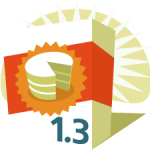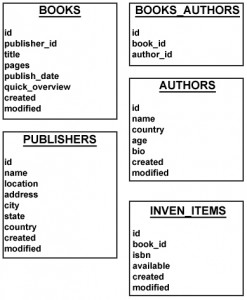So it has been a couple of weeks since I have posted. But now we need to set up some base code before we can go forward with the details and then adding in the Facebook Graph API. In the last post, the Data model was set up. We have skills and certifications as standalone tables. Skills with the levels and areas tables connected together. We also have the main glue of resumes, connected to covers and tasks which itself is connected to jobs. A lot of tables to create the resume section, but will keep some of this information all together. We need to create some code so that we can get all this information.
If you Baked each object, and used the Bake methods to create the model, and associations, as well as the controllers an views, you will have some code ready to use and ready to go. After you have Baked these items, the sample code that is created is ok to begin with. However, we want to take advantage of a very important technique, and the is the centralization of code, and prevent code duplication. There is one other thing that gets to me, and this is more of an OCD thing for me in code, and that is the way that Cake does the edit check in the controller. In the base created code, it creates a section of code that checks for an ID. If it is not passed, then it redirects the page elsewhere. Like so:
function edit($id = null) {
if (!$id && empty($this->data)) {
$this->Session->setFlash(__('Invalid resume', true));
$this->redirect(array('action' => 'index'));
}
. . . .
}
So in this code segment, if one gets to the edit form, and an ID is passed, and the form is not filled in, then it will display the actual form. And if the ID is not passed in, then it redirects to the Index page. For examples, if the site name was test.com:
www.test.com/resume/edit/2 – will result in the form being shown
www.test.com/resume/edit – will result in a redirect and the error message
Now here is where my OCD kicks in a little. . . .
(more…)


